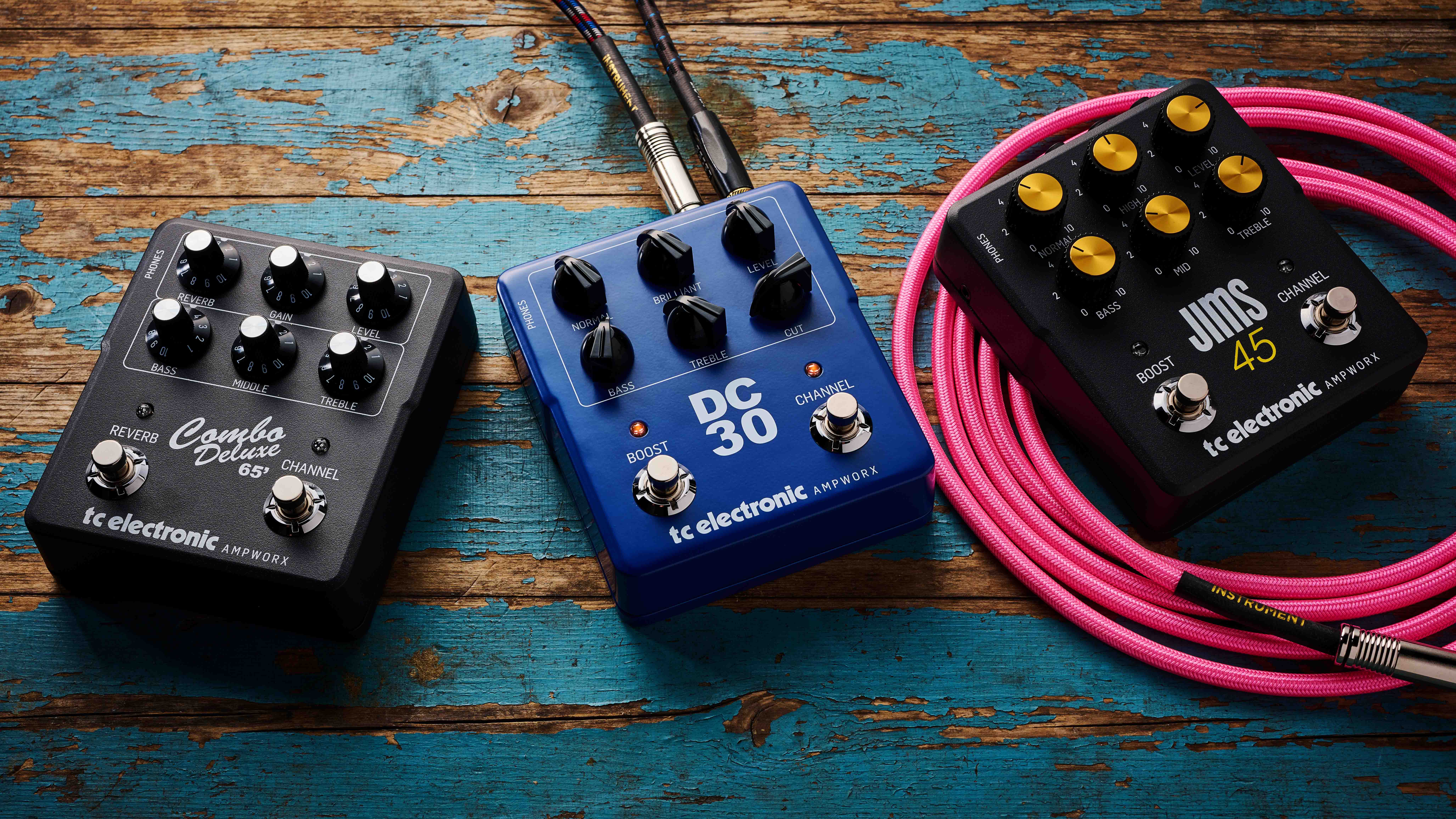MusicRadar Verdict
A strong start from TC Electronic into the amp pedal market, that could have been (or could be?) enhanced further with uploadable IRs. Nevertheless, these three offer a strong suite of features and performance for the asking price.
Pros
- +
Good digital emulations of classic tube amps
- +
Custom features are useful
- +
Accessible price
Cons
- -
Only one fixed onboard IR for each pedal
MusicRadar's got your back
TC Electronic Ampworx preamp pedals: What are they?
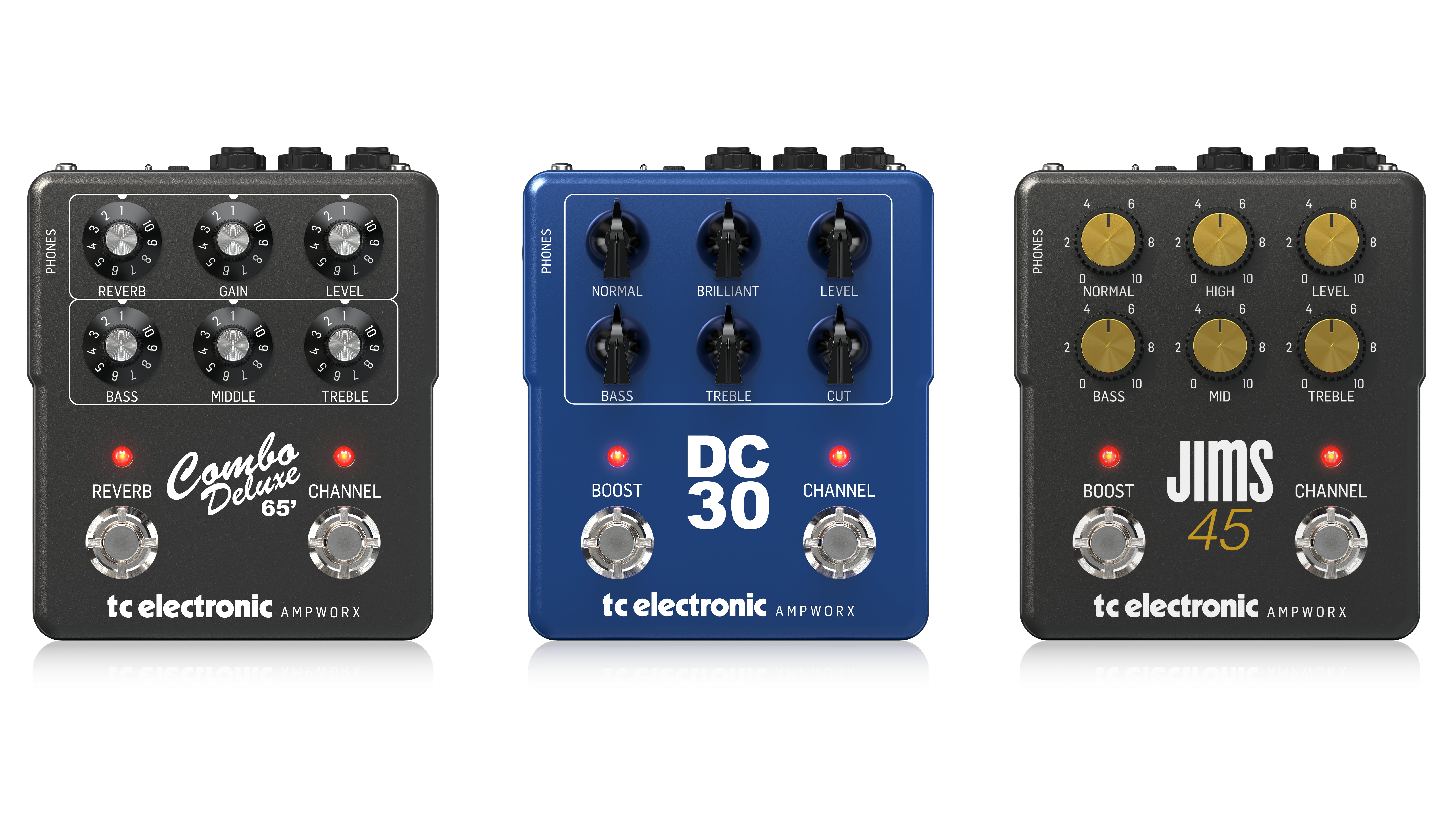
Amp pedals are here to stay; they're not taking over, but they are an undeniably valid alternative for many players and scenarios. And it makes sense – times have changed. The volume wars are over for many of us; deafening onstage volume isn't a badge of honour. The roar of valves cooking and cabs pushing air is still a wonder, but it's simply not applicable for a lot of situations us guitarists find ourselves in. And – I'll whisper this shocking observation – most of us aren't playing shows, so a compact and flexible alternative to our amps at home when we want it? Bring it on!
The prices have often reflected the fundamentally important role in your guitar tone these units can offer, and even around the £300 mark may still turn players off who are yet to be convinced by the potential usability. TC Electronic has news for those people with its Ampworx series; pedals that each hone in on recognised classic tube amps, with prices that would be deemed somewhat affordable in overdrive pedal circles.
The Ampworx Vintage series are preamp pedals, but you can gig and record with them without any extra investment; a DI out uses each pedal's onboard cab sim – an impulse response for each pedal provided by speaker institution Celestion – for plugging into PA, FRFR cab or DAW. Or use the standard output into a power amp or the FX return of your amp.
The choices each of the three hone in on are wise as they're universally lauded, if already represented in the market to varying degrees; the 1965 Fender Deluxe Reverb is one of the most recorded amps in history, while the VOX AC30 and Marshall JTM45 (aka Bluesbreaker) have seen plenty of action in legendary scenarios. The contemporary versions of these amps go for far north of $1000, so the idea of even attempting to recreate them in pedal form is admirable, not to mention ambitious.
But we've already seen it done by others (Universal Audio, Strymon and Walrus) with impressive results, so we know it's possible. In the case of UA, introducing the concept of focusing on one amp and one pedal's detailed digital emulation of it was appealing for us. And perhaps anyone else tired or wary of multi-effect and amp modeller option paralysis. Here we have focus with a more accessible price point as a potential added bonus.
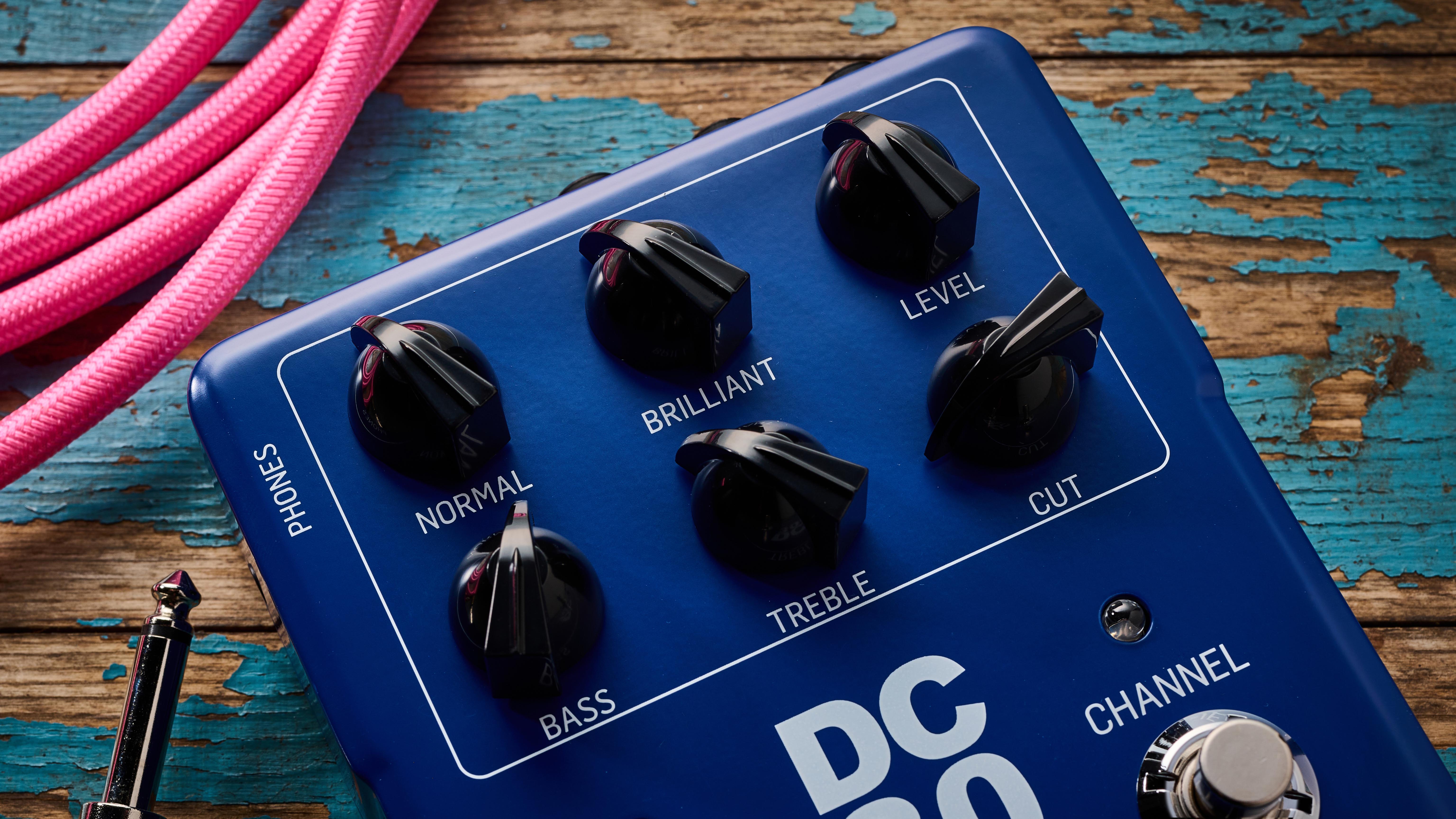
The first bit of positive news is all three of these dual switch pedals have a headphone out – something that we hope for with amp pedals but never assume we'll get. It widens that potential use scenario further; practice sessions with your pedalboard are now on the table. Literally, if you want.
Want all the hottest music and gear news, reviews, deals, features and more, direct to your inbox? Sign up here.
Two other welcome features also become apparent; each pedal has a switch and mini dial control at the rear that allows players to have deeper control over their tones. Each combination is specific to each pedal so we'll talk about how these affect the experience in turn.
All three have dual channels, while the JIMS 45 and DC30 have switchable boosts, the Combo Deluxe 65' (and no that apostrophe doesn't make sense to us either) has switchable reverb.
The decision to go with a micro USB over USB-C for firmware updates is a bit odd in 2023 though. TC does provide one in the box and we are testing the pedals with firmware version 1.0.08 newly installed – released on 1 September 2023. TC states in the release notes that this has made improvements to the cab sim IRs amongst other areas.
TC Electronic Ampworx preamp pedals: Performance and verdict
Combo Deluxe 65
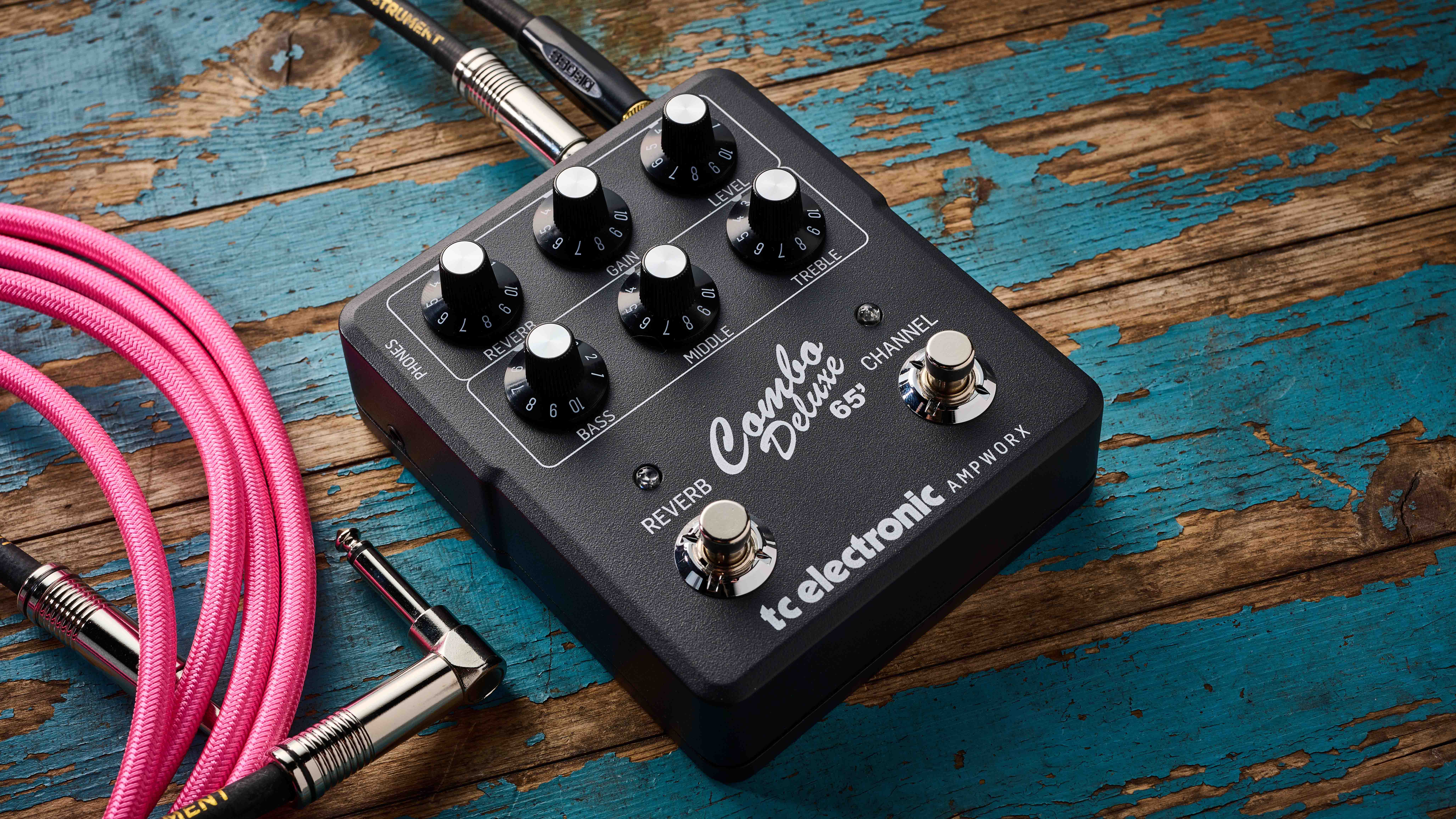
The Deluxe Reverb is a bit of a doozy as an amp pedal subject because of the idea of a 'platform'. High clean headroom for your overdrive pedals, with grit of its own as required. There's also that drippy, surfsome spring reverb that has snared the hearts of many a player over the decades.
It's a pedal that is inevitably going to be compared to the UAFX Dream '65, because it's exactly the same inspiration. However, both the Strymon Iridium and newly updated Walrus ACS1 also include emulations based on the Fender Deluxe Reverb – we did say it was a classic tube amp.
TC's is the only Fender-inspired amp pedal we've seen to feature 'witch hat' control knobs, to evoke the original amp, which is a nice touch – and something all three pedals here do to nod to their respective inspirations. But there are some omissions as well as additions elsewhere.
Unlike the UAFX pedal – which is almost three times the price – there's no vibrato like the real amp. TC has also added the middle control that you won't find on a '65 original or reissue alongside its treble and bass – but something Fender ended up using for its Twin model. Here I find it an appreciated extension to further shape your sounds, especially if this is the platform for the rest of your pedals.
So there may be no vibrato here but TC is clearly trying to pack useful features in around the Fender blueprint
Instead of the volume control setting the gain level, there are separate gain and level knobs, and around the rear of the pedal there are some interesting features; a Bright switch for darker pickups (humbuckers we're looking at you) and a reverb tone control for deeper voicing that can, again, address darker pickups as well as your own personal tastes. So there may be no vibrato here but TC is clearly trying to pack useful features in around the Fender blueprint – and it calls these added features its Custom Mods.

First of all, I'm running all three TC Ampworx pedals through a Line 6 Powercab set to Flat mode for the full FRFR experience to judge the onboard IR for each pedal, but also using third-party IRs uploaded to the Powercab that will enable me to compare.
The pedal has a Green and Red channel with the latter offering more gain – this is the same on all three models. Players can set the pedal's Channel footswitch as a bypass if they want to use it with their amp or another amp pedal, otherwise one of the two channels is always on.
I add the Combo Deluxe to the end of my pedalboard signal chain that includes a Wampler Tumnus, higher gain Funny Little Boxes 1991 overdrive, UAFX Astra and the BOSS DM-101 Delay Machine (that impressed me so much in my review I stumped up to buy one afterward).
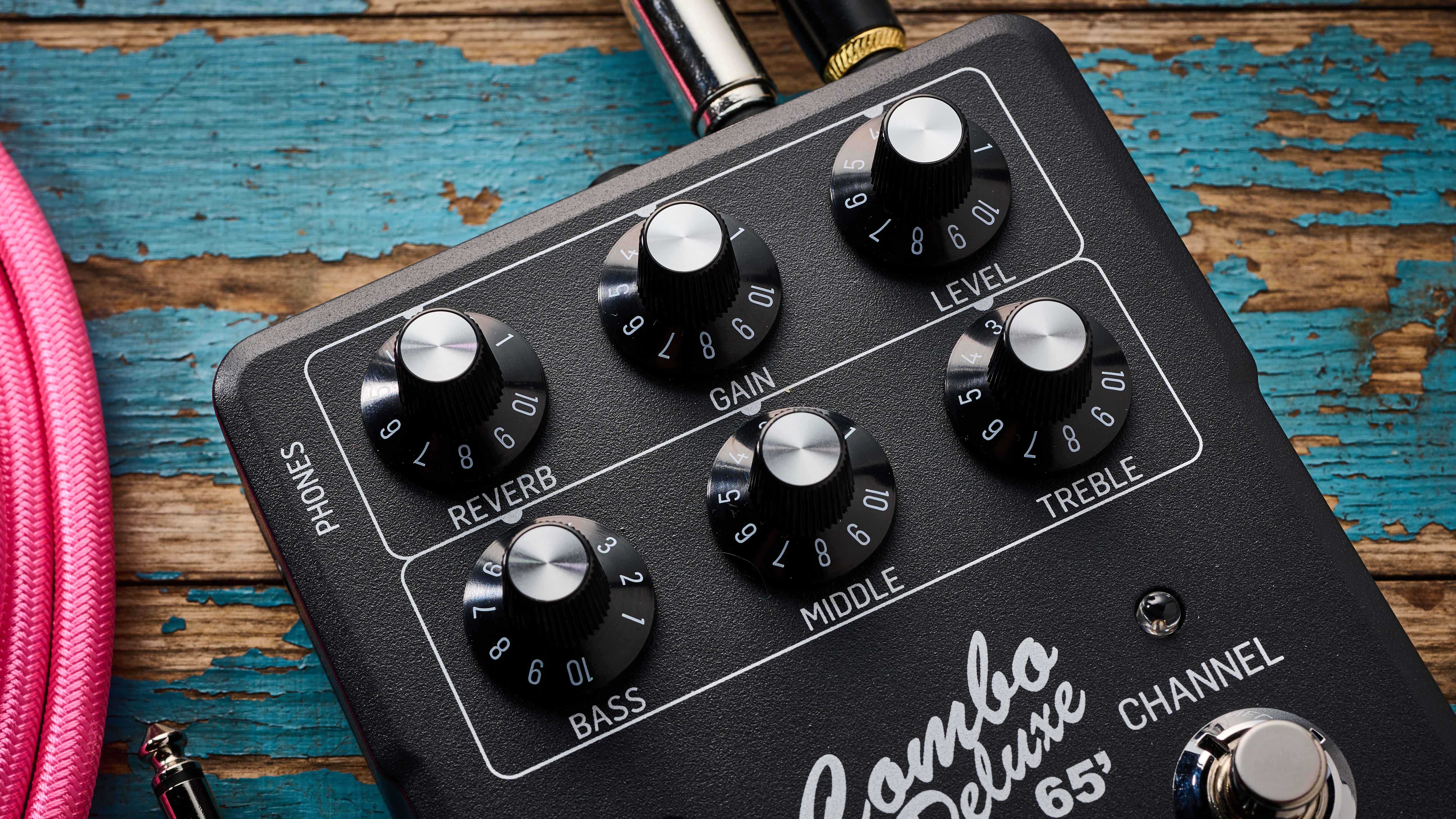
On the Green channel, and having tried the pedal before and after the latest firmware, the clean headroom has been increased; we found breakup is now closer to 6 on the gain control. So certainly higher than the tube amp.
Already, the tones impress in isolation; digital modelling struggled to capture this kind of breakup point for years but it becomes apparent how far things have come. If you want to switch between the channels you'll need to spend some time balancing levels – and perhaps noting them because there's no ability to lock in either channel to a preset. Just like an amp. But unlike a two-channel amp, you're sharing the same set of controls here.
Personally, I found with this pedal that I prefer to stick with one channel and drive from my overdrive pedals, and it's excellent for that purpose, but the two channels and switchable reverb leave the options open for others.
As a platform for other pedals with the onboard IR, it delivers very well
The weighty cut of the cleans and low gain grit that chimes is present and correct here; it has more of a 'standing in front of an amp' rawness compared to the UAFX's more produced and nuanced take to my ears, and the Bright Switch is subtle but does make my SG's buckers spank harder. As a platform for other pedals with the onboard IR, it delivers very well but in the relatively higher gain territory of the pedal, it sounded fizzier running it through a clean amp and the treble needed to be wound back further.
The spring reverb emulation adds to the versatility here for everything from subtle to slapback, surf and your soundtrack to an imaginary western
The Deluxe Reverb's vibrato is absent here, but spring reverb emulation is included with its own footswitch. I don't want to labour the UA comparisons but outside of Fender's Tone Master amps – and the high amount of processing dedicated to replicating the company's '60s spring reverb tanks in them – Universal Audio currently sets the standard for it in the digital realm. TC's take isn't as authentically drippy but it's actually less subtle in the lower settings to my ears, so players may not want to set the brightness control too high. It's still an impressive emulation that adds to the versatility here for everything from subtle to slapback, surf and your soundtrack to an imaginary western. And it could mean you ditch your reverb pedal if spring is your thing.
DC30
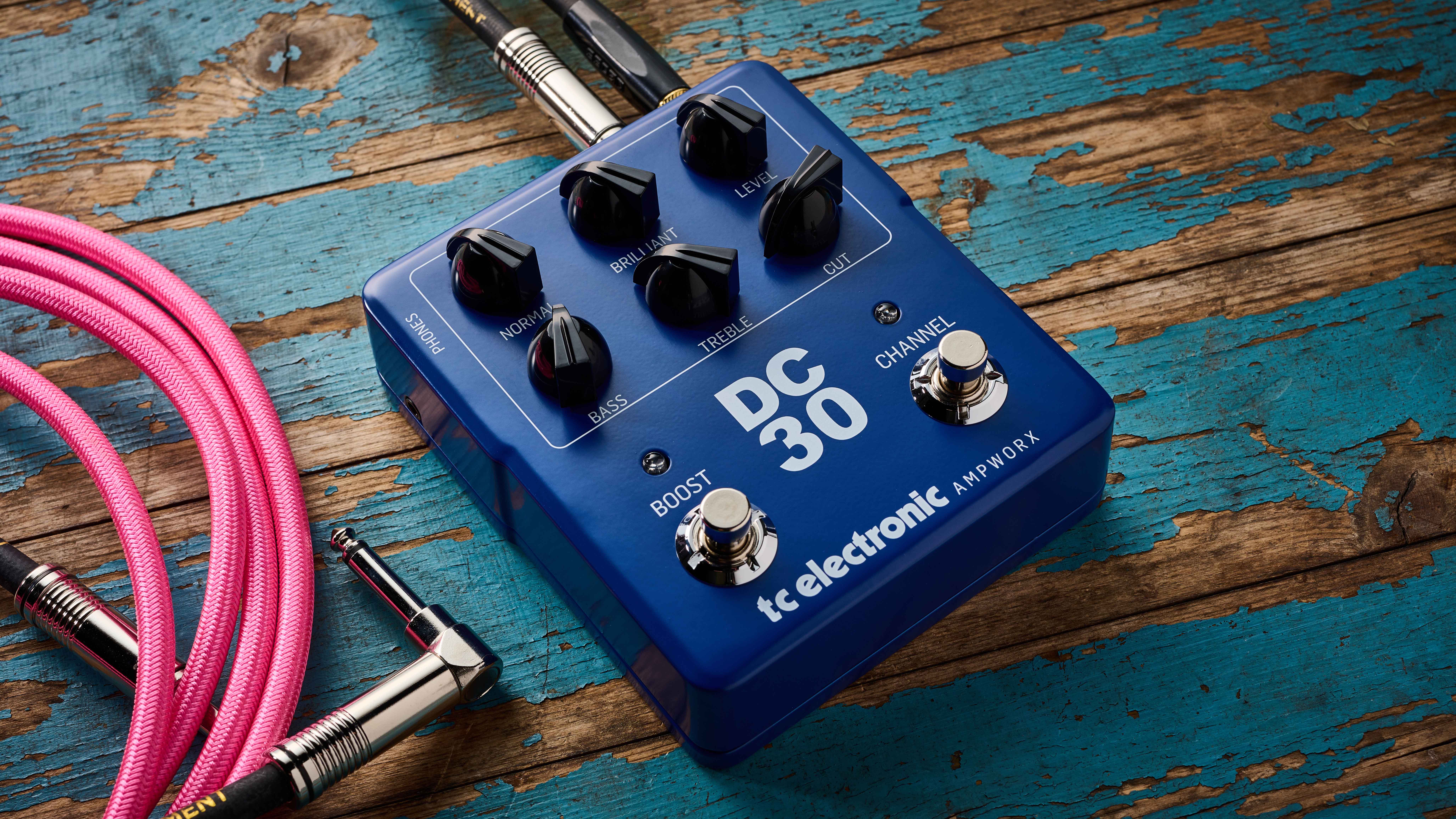
The Vox AC30 can be a magical amp, but compared to the Deluxe Reverb, it can make you work harder to unlock that goodness. It can be a hard combination to replicate in the digital realm, which makes a dedicated pedal to hone in on the elements welcome.
While UA was almost slavish to authenticity for its highly impressive UAFX Ruby '63, the DC30's approach might actually appeal to those who are less dyed-in-the-wool Vox fans. But there's still a learning curve with the controls for newcomers.

Bass and Treble are as you'd expect, Cut is a low pass filter altering the treble cut for the emulated power amp section here. The Normal and Brilliant controls set the gain for the DC30's normal and bright signal paths. Like the Combo Deluxe, there's two channels; a Green clean and Red for more gain. Here there's a boost too, with a mini rotary control at the back of the pedal to set the amount of gain that will be engaged.
In addition to that gain dial, another custom feature here is the Pre/Post-Boost switch at the rear; enabling players to decide if the boost is applied for more distortion and midrange attack before the amp, or after for a volume lift. Both are different 'Custom' touches to the Fender-inspired pedal that are tailored here.

The boxy push and Voxy chime are soon coaxed out but if you're using this pedal with dirt boxes, you really need time to balance these controls carefully. Setting the Normal and Brilliant around 10 o'clock with the Cut about the same gave me a bright and articulate clean foundation to build on with a Vintera II '60s Tele that's with us for review right now. I then added some external plate reverb from a UAFX Del-Verb and experimented with the boost for volume post-amp and as pre-amp as a tone for guitar solos in itself. I found setting the gain level about midway for it was best or it was too much of a dramatic jump.
It raises the tantalising prospect of what TC would have on its hands if it could allow uploadable third-party IRs to these pedals
But a clean machine is just one way to go; I was happily dialling in raucous Rory blues-rock tones, getting Edgy with delay and, er, tying my mother down too. Best affordable ticket to AC30 goodness around? I'm struggling to think of a pedal that beats this for the asking price on that front, but in direct comparison with the deep dive AC30 experience of the UAFX Ruby '63 the DC30 sounds thinner in stock form. It's significantly less so when I use the Powercab's Essex speaker model, based on the AC30 Blue Bell, and an uploaded IR from a 1964 AC30. It raises the tantalising prospect of what TC would have on its hands if it could allow uploadable third-party IRs to these pedals.
JIMS 45

The IR question feels even more prevalent with this pedal. The JIMS 45 might be the favourite of the three for some players regardless.
It perhaps helps that no other pedal amp has overtly focussed solely on a Marshall model and here TC has gone for the 1964 JTM45 (aka the Bluesbreaker) for its link with Clapton and Peter Green in John Mayall's band. It was also a design influenced by Fender's Bassman.
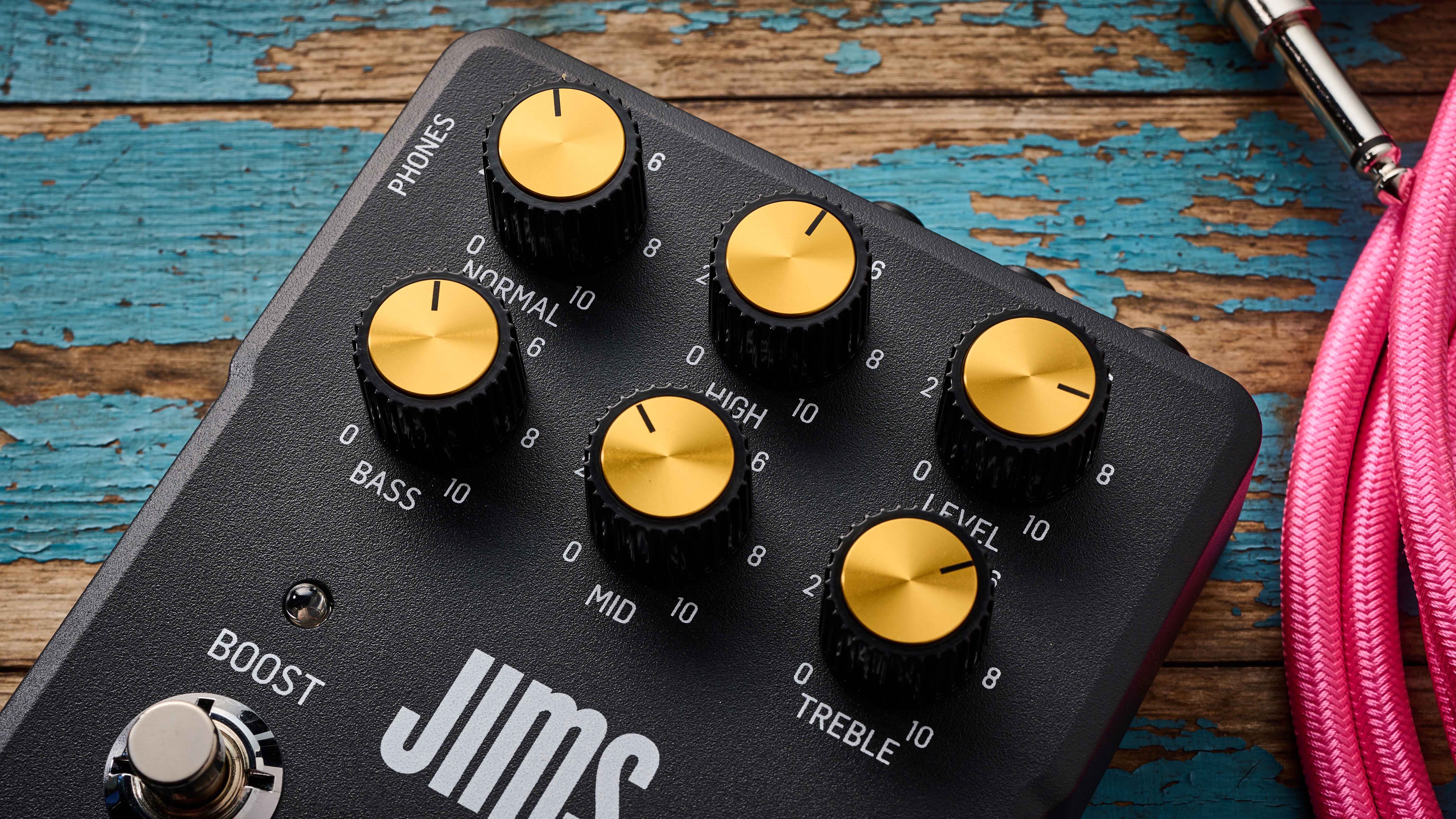
The Custom TC touch here is Pre- and Post-Boost control, and this pedal also has a presence control at the back. On the IR side, the included Celestion IR of a 4 x 12 G12M Creamback is fine, but when we bypass it to use the Powercab's Green take on the Greenback, and a third party '67 Greenback IR we load onto it too, the cleans shine brighter, sound thicker and resonate deeper on the JIMS 45's suitably allotted Green channel. They reflect the Fender influence a little more, and I found the amount of clean headroom with the stock IR here isn't quite as high as my encounters with the real thing.
Greenbacks aren't always associated with clean tone, but my experience here with these IRs suggests an upgrade some players would appreciate. However, while the other two pedals are based on amps that are popular as clean platforms, that's not likely to be the first port of call for those interested in the JIMS 45
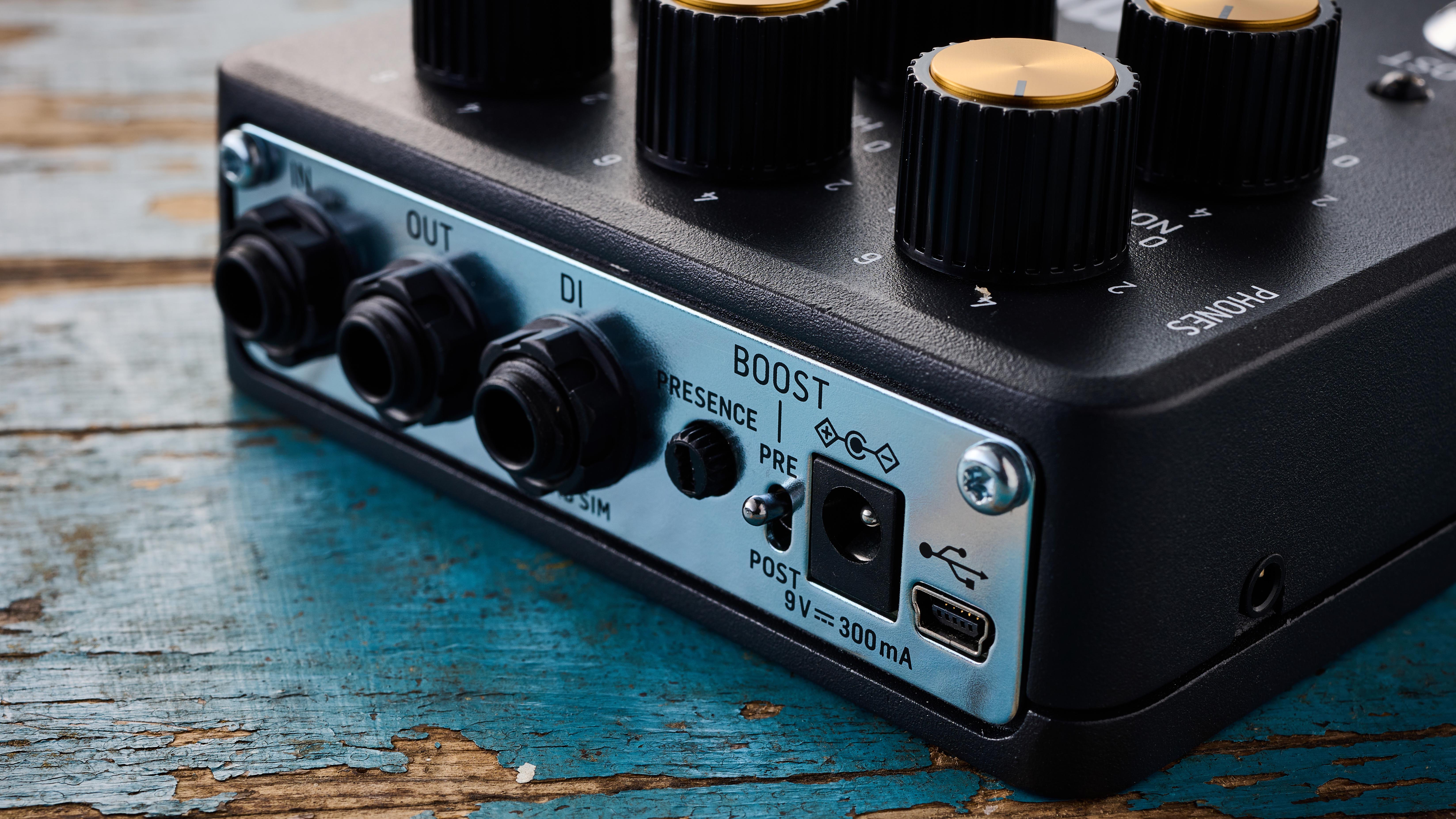
Taking a leaf from Slowhand's lead, I take a different approach and clean up with volume control of my humbucker-loaded Gordon Smith GS-1 while in gainier territory on the Green and lead Red channel. It's very persuasive.
Edge of breakup and beyond at neighbour-friendly volumes is another plus in an amp pedal's favour for anyone who wants to cut loose when they finish work for the day. Because it bears repeating that despite what you may hear elsewhere, most of us aren't gigging; we just want a great tone in our homes at manageable levels. That's definitely the case here but if you need anything beyond medium gain tones from this - rich and fullsome though they are – you'll need to add an overdrive like a Tube Screamer or Klon to the chain.
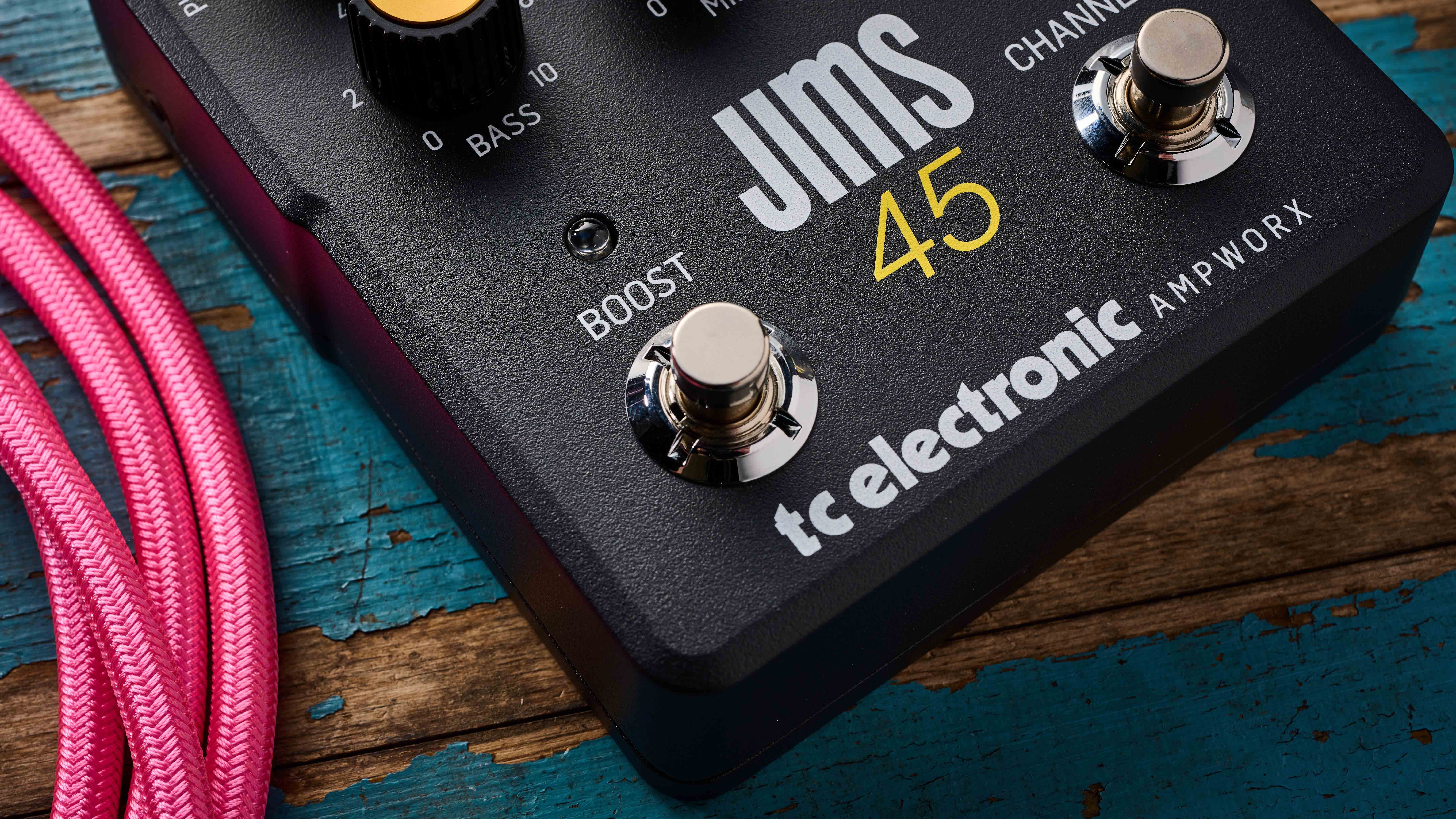
The elephant in the room, which I've already tickled the trunk of previously in this review, is that amp pedals really need impulse responses to thrive. They are an integral part of the equation and experience in your ears and under your fingers as a player. But what is the right IR? The key is the choice and opportunity to find it – the ability to select from a curated batch (like the UAFX amp emulators) or, even better, upload one of your choosing from the huge range of third-party options out there (Strymon's Irdium, Walrus Audio ACS1 and the surprising value of the Nux Amp Academy).
There's something to be said for the focus on a single amp experience, and TC Electronic's approach in using specialists Celestion for the stock IR shows its commitment to authenticity on the cab sim side. The results are impressive, but even my fairly limited trials with third-party IRs with these pedals suggests the potential for players to tailor and improve the experience further. And theoretically, it wouldn't be a difficult addition to a digital pedal – it's already got an IR loaded onto it, so why not a different one with the right software support? It will be a non-issue for the players who simply want to run these from the normal output into a clean amp, or into the FX loop of their amp to add a completely new preamp flavour. But they simply sound better direct with an IR and it feels like they were designed to be used that way primarily.
The performance at this price point still makes these a good introduction to amp pedals for those who know which way they want to gravitate, at a price point that is fair and a feature-set that's got you pretty well covered for recording, practice and beyond. The Combo Deluxe 65' and DC30 are especially good clean platforms for pedals at this price, with the former the best all-rounder with that reverb and taking drive pedals the best, while the JIMS 45 is surprising in how much of a generally good Marshall experience it delivers in compact form. And if you have your own IR loader unit on the pedalboard and in the DAW to tailor these further? Even better.
MusicRadar: A strong start from TC Electronic into the amp pedal market, that could have been (or could be?) enhanced further with uploadable IRs. Nevertheless, these three offer a strong suite of features and performance for the asking price.
TC Electronic Ampworx preamp pedals: Hands-on demos
Thomann
Pedalboards Of Doom
Leigh Fuge
Ben Fletcher
TC Electronic Ampworx preamp pedals: Specifications
Combo Deluxe 65'
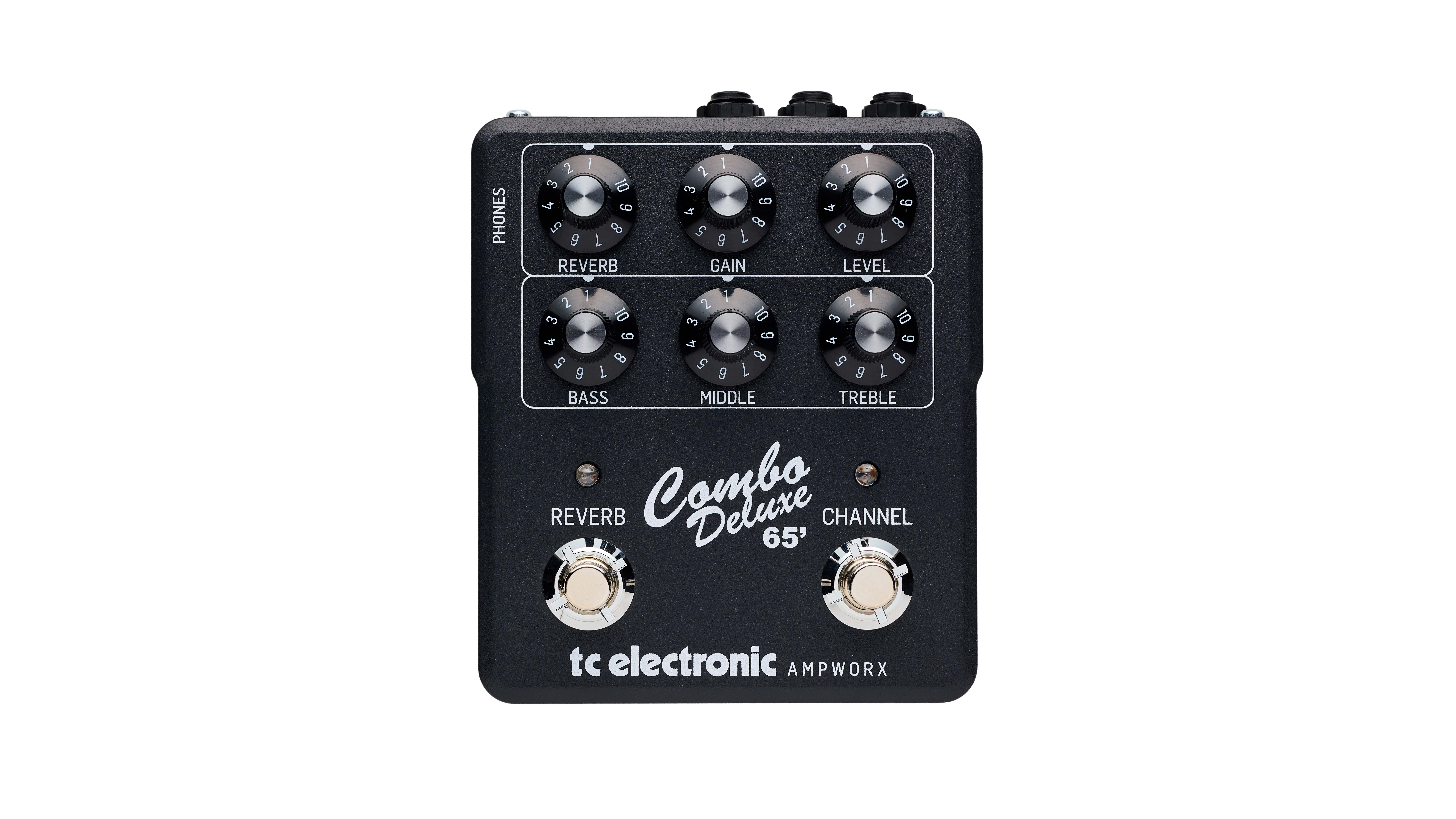
- CONTROLS: Level, Gain, Reverb, Bass, Treble, Middle, Reverb and Channel/bypass footswitch, Reverb Tone, Bright switch
- FEATURES: Onboard Celestion Cab Sim IR with DI, 1/4 inch input and output, USB mini for firmware updates, 3.5mm headphone out
- POWER: 9V centre-negative power supply (300mA minimum draw, PSU not included)
- CONTACT: TC Electronic
DC30
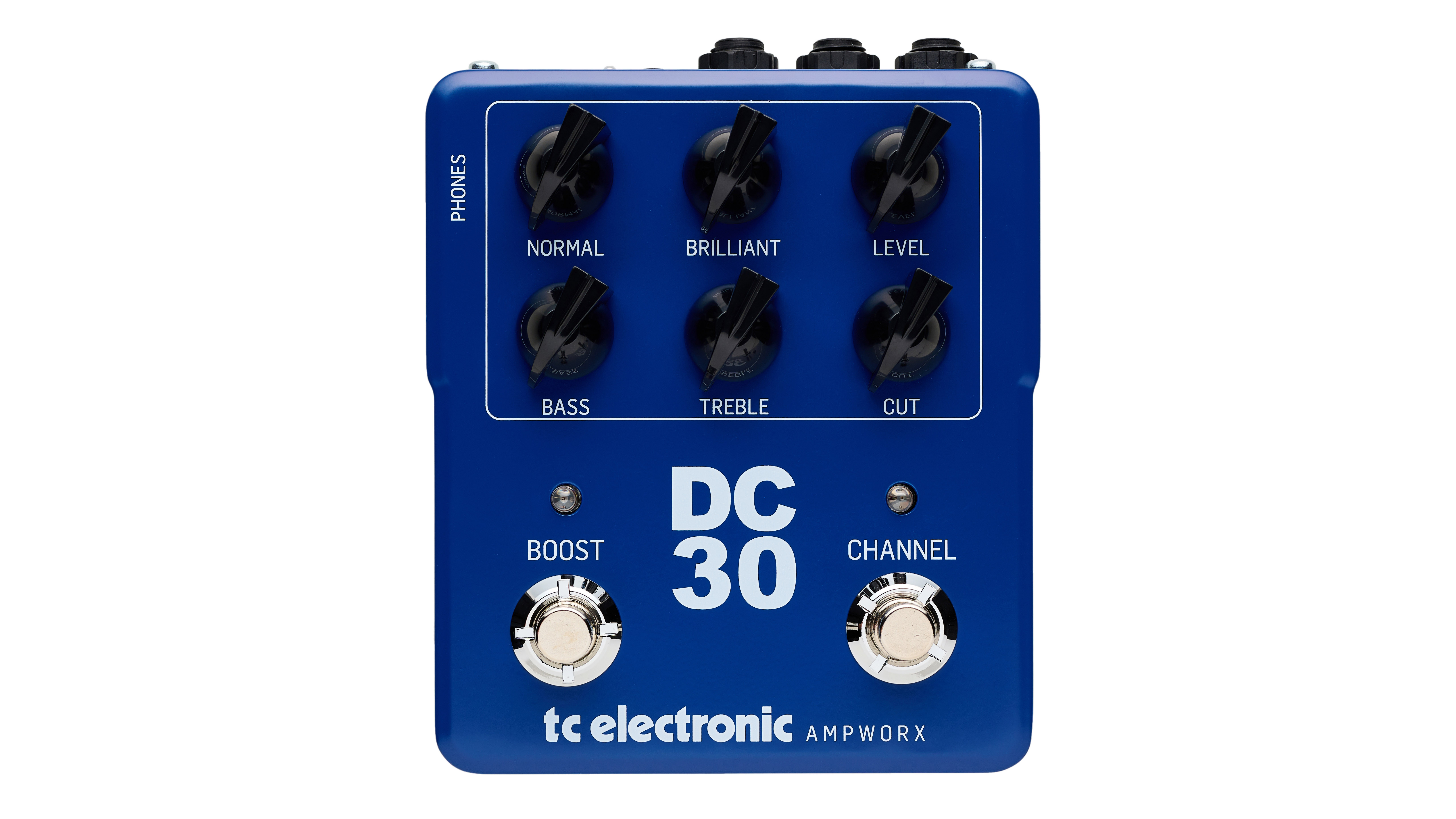
- CONTROLS: Normal, Brilliant, Level, Bass, Treble, Cut, Boost and Channel select footswitch, Boost Gain level, Pre-/Post-Boost switch
- FEATURES: Onboard Celestion Cab Sim IR with DI, 1/4 inch input and output, USB mini for firmware updates, 3.5mm headphone out
- POWER: 9V centre-negative power supply (300mA minimum draw, PSU not included)
- CONTACT: TC Electronic
JIMS 45

- CONTROLS: Normal, High, Level, Bass, Mid, Treble, Boost and Channel select footswitches, Presence control, Pre-/Post-Boost switch
- FEATURES: Onboard Celestion Cab Sim IR with DI, 1/4 inch input and output, USB mini for firmware updates, 3.5mm headphone out
- POWER: 9V centre-negative power supply (300mA minimum draw, PSU not included)
- CONTACT: TC Electronic

Rob is the Reviews Editor for GuitarWorld.com and MusicRadar guitars, so spends most of his waking hours (and beyond) thinking about and trying the latest gear while making sure our reviews team is giving you thorough and honest tests of it. He's worked for guitar mags and sites as a writer and editor for nearly 20 years but still winces at the thought of restringing anything with a Floyd Rose.
